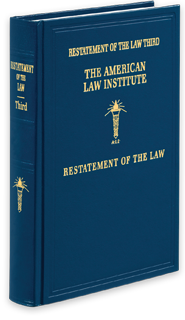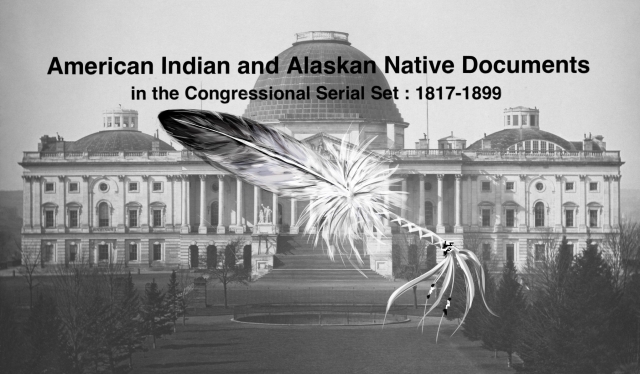Research Guides
-
National Indian Law Library Research by TopicTopical collection of articles and links to information on major Native American legal issues
-
Indian Nation Archives How to Build a Tribal Legal HistoryThis Web site describes a step-by-step process for finding the documents needed to build a tribal legal history
Online Study Aids
-
American Indian Law in a Nutshell by
Call Number: Donald Pray Law Library Law Reserves KF 8205 .Z9 C36 2020 Also available Online in West Academic Study Aids.ISBN: 9781640209138Publication Date: 2019-12-30Historical overview of federal Indian law and policy -- The special relationship between the federal government and the tribes -- Indian tribal governments -- Indian tribal sovereignty -- Indian treaties -- Criminal and civil jurisdiction in Indian country -- Public Law 280 : a federal grant of jurisdiction to the states -- Taxation and regulation in Indian country -- Indian gaming -- Individual rights and Indian law -- Indian lands -- Alaska natives -- Indian water rights -- Indian hunting and fishing rights. -
American Indian Tribal Law by
Call Number: Donald Pray Law Library The Strickland Collection of Native Peoples Law KIE 110 .F57 2020 Also available online in Wolters Kluwer Study Aids.ISBN: 9781543813647Publication Date: 2020-02-01Tribal government -- Tribal justice systems -- Tribal constitutions -- Tribal membership -- Tribal elections -- Civil rights -- Criminal law and procedure -- Domestic relations -- Property -- Contracts -- Torts -- Procedure and jurisdiction -- Tribal regulatory and administrative law -- Professional responsibility and regulation of lawyers.
"A coursebook for the law school elective American Indian Tribal Law"-- -
American Indian Tribal Law by
ISBN: 9798889061618Publication Date: 2024-03-07Nearly every American Indian tribe has its own laws and courts. Taken together, these courts decide thousands of cases. Many span the full panoply of law, from criminal, civil, and probate cases to divorce and environmental disputes. The Third Edition of American Indian Tribal Law surveys the full spectrum of tribal justice systems. With cases, notes, and historical context, this text is ideal for courses on American Indian Law or Tribal Governments, and an essential orientation to legal practice within tribal jurisdictions. New to the Third Edition: New materials on Anishinaabe jurisprudence Additional materials on tribal laws incorporating Indigenous language and culture Recent and noteworthy cases from tribal courts Additional examples from tribal justice systems and practice Professors and students will benefit from: A broad survey of dispute resolution systems within tribal jurisdictions A review of recent flashpoints in tribal law Cases and material reflecting a wide range of American Indian tribes and legal issues Excerpts and commentary from a wellspring of current scholarship.
-
Federal Indian LawMatthew Fletcher’s Hornbook on Federal Indian Law is a deep survey of the history and substantive law governing the relations between the three American sovereigns, federal, state, and tribal. Interwoven are issues of federalism, administrative law, constitutional rights, and international relations. This hornbook includes original research and novel analysis of foundational Supreme Court decisions and critical federal statutory schemes – the stories beyond the stories. In addition to delving into the origins and histories of cases and statutes, the hornbook analyzes modern Indian rights settlements, the international and comparative frontiers of Indian law, and the future of the field.
-
Indian Law StoriesThis book covers the often complex and unfamiliar doctrine of federal Indian law, exposing the raw conflicts over sovereignty and property that have shaped legal rulings. Fifteen distinguished authors describe gripping cases involving Indian nations over more than two centuries, each story emphasizing initiative in tribal communities and lawyering strategies that have determined the fate of nations.
Restatement of the Law, The Law of American Indians
-
 Restatement of the Law, the Law of American Indians
by
Call Number: Donald Pray Law Library The Strickland Collection of Native Peoples Law KF 8205 .R485ISBN: 9781668734759Publication Date: 2022-01-01
Restatement of the Law, the Law of American Indians
by
Call Number: Donald Pray Law Library The Strickland Collection of Native Peoples Law KF 8205 .R485ISBN: 9781668734759Publication Date: 2022-01-01
The Restatement of the Law, The Law of the American Indian is also available on Lexis+, Westlaw Precision, and HeinOnline.
Databases
American Indian and Alaska Native Documents in the Congressional Serial Set 1817-1899 - During the 19th century, the United States was engaged in an era of territorial expansion and addition of new states. The government entered into treaties with tribes, conducted wars with tribes, established reservations, relocated tribes, and determined rights to the lands and resources of the indigenous population. The Serial Set provides in-depth, detailed contemporaneous documentation of political, military, and governmental activities related to indigenous peoples of the continental United States and Alaskan territory.
The United States government documents included in this colloection were assembled from the Oklahoma Department of Libraries print collection and scanned at the University of Oklahoma Donald E Pray Law Library. Librarians Marilyn Nicely and Steve Beleu identified titles to scan using Steven L. Johnson’s book, Guide to American Indian Documents in the Congressional Serial Set: 1817-1899.

-
HeinOnline American Indian Law CollectionWith more than 700 unique titles and 750,000 pages dedicated to American Indian Law, this collection includes an expansive archive of treaties, federal statutes and regulations, federal case law, tribal codes, constitutions, and jurisprudence. This library also features rare compilations edited by Felix S. Cohen that have never before been accessible online.
-
Lexis+ Native American LawIt is a source for online access to Cohen's handbook of Federal Indian Law. It also includes federal administrative agency decisions, and treaties. It includes other secondary materials on a variety of topics including gaming.
-
Westlaw Native American LawOnline source for a limited group of Tribal court cases and tribal codes. Also includes federal cases and statutes.
Tribal and First Nation Newspaper Sources
American Indian Newspapers offers a diverse collection of print journalism from Indigenous peoples of the US and Canada. Resources include national periodicals as well as local community news and student publications. This collection is also bi-lingual and features editions in Indigenous-languages, such as Hawaiian, Cherokee and Navajo. Subjects covered include the self-determination era and American Indian Movement (AIM), education, language revitalisation, environmentalism, tribal laws, public health and welfare, and rights and cultural representation from an Indigenous perspective. This resource has been developed with the permission and contribution of the newspaper publishers and Tribal Councils concerned.
Oklahoma Historical Society American Indian Newspapers provides a list of sixty-six newspapers collected by the OHS. The listing also provides information about the Oklahoma locations of the publications. Links to those publications that can be viewed online are also provided.
Oklahoma Native Community - News and Current Awareness Resources
Native Times is an independent, native-owned news source based in Oklahoma. News posts include content written by Native Times contributors as well as Associated Press and other news sources.
Mvskoke Media aims to be the voice of the Mvskoke people by distributing information to the Muscogee (Creek) Nation through its newspaper, radio show, and TV broadcasts as well as graphic design and printing services.
Tahlequah Daily Press Tribal News provides news about tribes in Oklahoma. Because Tahlequah is the home of the Cherokee Nation, the focus of much of the news at this site is on the Cherokee Nation.
Sequoyah National Research Center - University of Arkansas Little Rock
The Sequoyah National Research Center (SNRC) provides a collection of varying materials, including a collection of tribal newspapers. The Newsletters of the SNRC reflect the diversity of the materials available and the past and future activities of the Center.
Web Pages
-
Native American Constitutions and Law Digitization ProjectIncludes first edition of Cohen's Handbook, Solicitor Opinions, IRA constitutions, Rarick's guide to Oklahoma Indian Land Titles, and Imre Sutton's research guide on American Indian Territoriality, and more
-
Tribal Court ClearinghouseCompilations and links to tribal court decisions, resources and links to tribal laws/codes and constitutions
-
Tribal Govenrments USA.govProvides links to tribal governments
-
National Indian Law Library Tribal Law GatewayOutstanding web page provided by the National Indian Law Library of the Native American Rights Fund. Provides access to a large number of tribal codes and constitutions. It is a public library.
-
National Indian Law Library Indian Law BulletinsBulletins highlight cases and federal legislation of importance to tribes from the U.S. Supreme Court; Federal Court of Appeals; Federal Trial Courts; State Courts; U.S. Regulatory information, U.S. Congress; Law Reviews and Bar Journals. Back issues are archived for access.
-
Northwest Tribal Court Appellate OpinionsFree access to hundreds of tribal court appellate opinions from thirty Indian tribes in the Pacific Northwest, Alaska, and Northern California.
-
Law Library of Congress Indigenous Law PortalInteractive map of geographic regions in the United States that links out to online tribal codes, constitutions, cases, tribal websites, and more within each region.
-
Indian Country News / Tribal Court ClearinghouseLinks out to numerous current awareness news sources.
Sovereignty Symposium Materials
-
Sovereignty Symposium MaterialsA collection of scanned materials previously collected in print by the Oklahoma Supreme Court from the Sovereignty Symposium.

